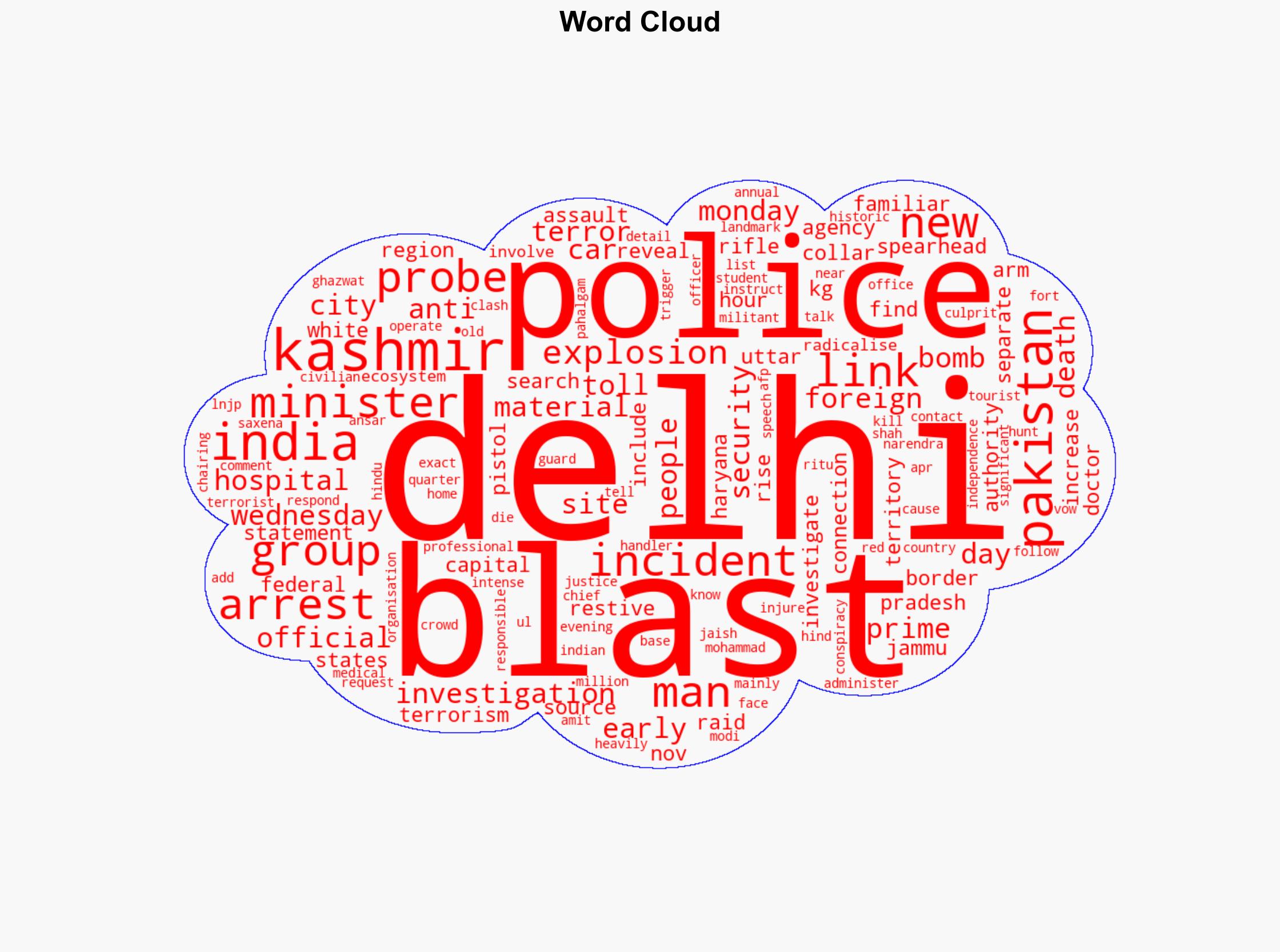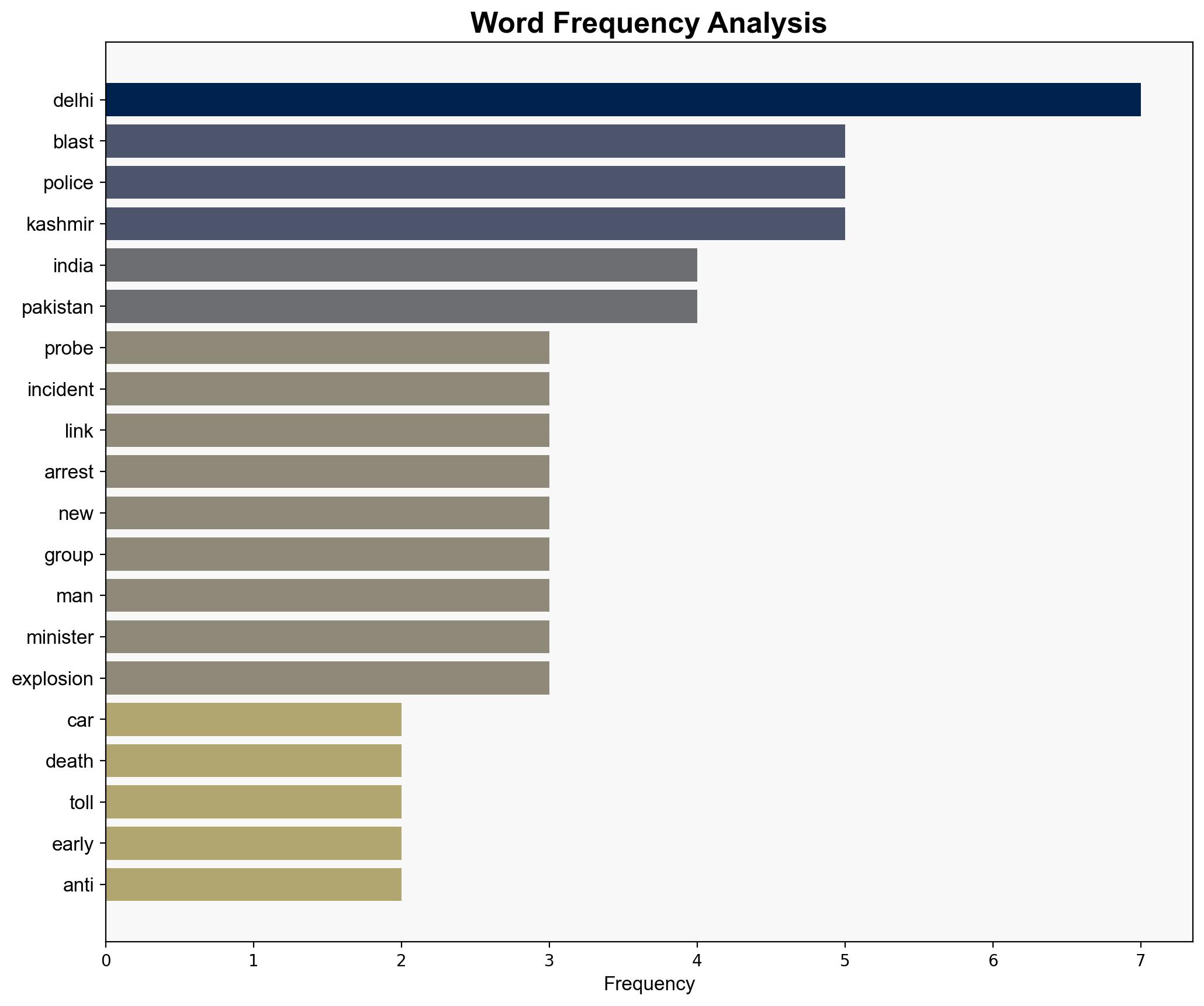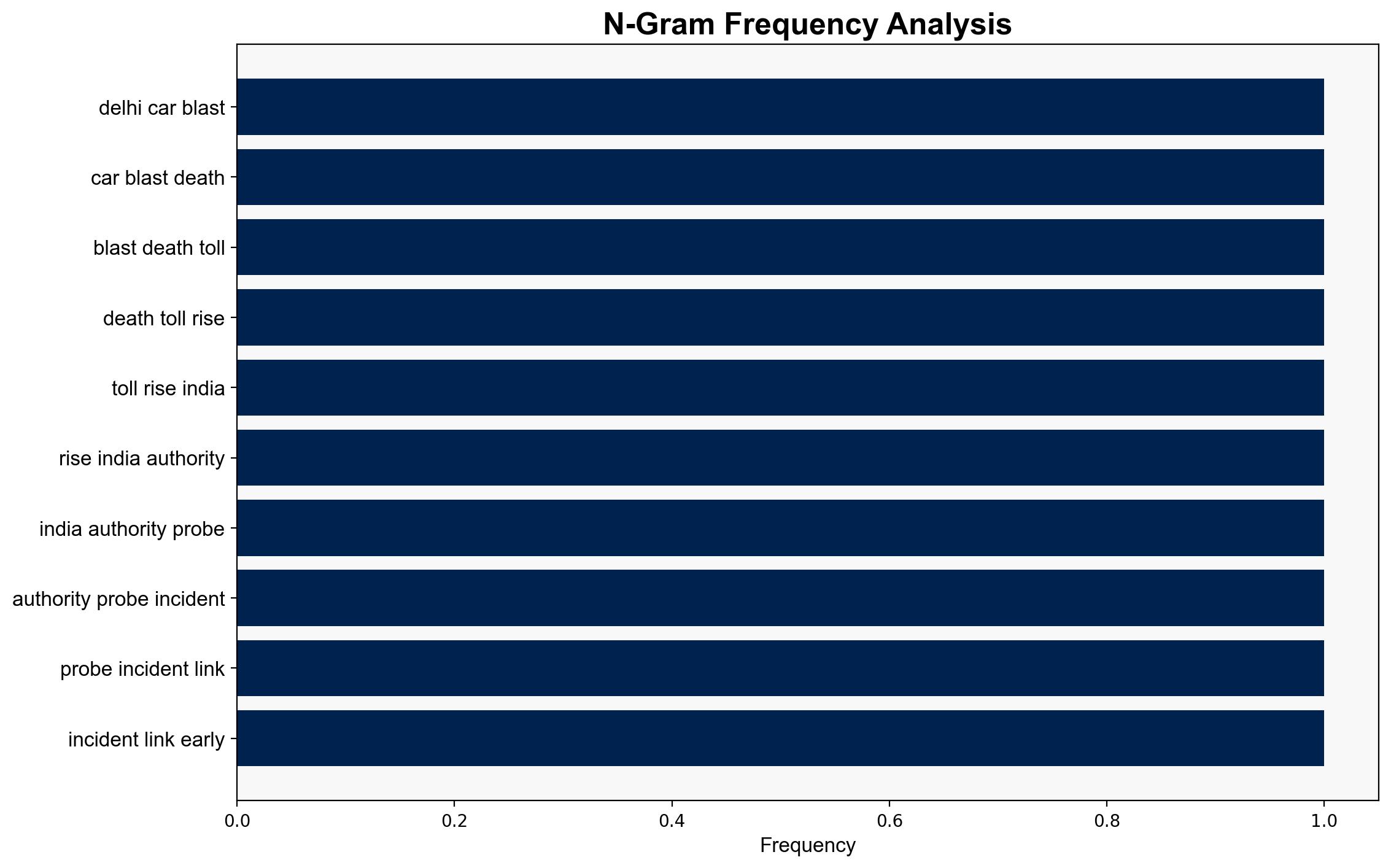India capital car blast death toll rises to 12 – CNA
Published on: 2025-11-12
AI-powered OSINT brief from verified open sources. Automated NLP signal extraction with human verification. See our Methodology and Why WorldWideWatchers.
Intelligence Report: India capital car blast death toll rises to 12 – CNA
1. BLUF (Bottom Line Up Front)
With a moderate confidence level, the most supported hypothesis is that the car blast in New Delhi is linked to a coordinated terrorist effort involving groups operating from the Kashmir region with potential ties to Pakistan-based militant organizations. Recommended actions include enhancing intelligence sharing with international partners, increasing security measures in high-risk areas, and diplomatic engagement with Pakistan to address cross-border terrorism.
2. Competing Hypotheses
Hypothesis 1: The car blast is a terrorist attack orchestrated by Kashmir-based militant groups with support from Pakistan-based organizations such as Jaish-e-Mohammad and Ansar Ghazwat-ul-Hind.
Hypothesis 2: The explosion is a result of a local criminal gang’s activities, possibly involving a failed smuggling operation or an internal dispute, with no direct links to organized terrorism.
Hypothesis 1 is more likely given the evidence of arrests in Kashmir, the discovery of bomb-making materials, and the historical context of militant activities in the region. Hypothesis 2 lacks supporting evidence and contradicts the current investigation’s findings.
3. Key Assumptions and Red Flags
Assumptions: It is assumed that the arrested individuals are directly linked to the blast and that the materials found are intended for further attacks. There is an assumption of Pakistan’s involvement based on historical patterns.
Red Flags: The rapid attribution to foreign handlers and militant groups without conclusive evidence could indicate bias. The potential for misinformation or exaggeration by involved parties to serve political agendas is a concern.
4. Implications and Strategic Risks
The incident could escalate tensions between India and Pakistan, potentially leading to increased military posturing or skirmishes along the border. Domestically, it may result in heightened communal tensions and stricter security measures impacting civil liberties. Internationally, it could affect India’s diplomatic relations and its image as a stable investment destination.
5. Recommendations and Outlook
- Enhance intelligence collaboration with allies to trace and disrupt militant networks.
- Strengthen security protocols in major cities and sensitive areas.
- Engage diplomatically with Pakistan to address cross-border terrorism concerns.
- Best-case scenario: Successful dismantling of the involved network with minimal further incidents.
- Worst-case scenario: Escalation into broader regional conflict with significant economic and human costs.
- Most-likely scenario: Continued sporadic attacks with increased security measures and diplomatic tensions.
6. Key Individuals and Entities
Prime Minister Narendra Modi, Home Minister Amit Shah, Jaish-e-Mohammad, Ansar Ghazwat-ul-Hind.
7. Thematic Tags
Regional Focus: South Asia, Counterterrorism, India-Pakistan Relations, Internal Security
Structured Analytic Techniques Applied
- Causal Layered Analysis (CLA): Analyze events across surface happenings, systems, worldviews, and myths.
- Cross-Impact Simulation: Model ripple effects across neighboring states, conflicts, or economic dependencies.
- Scenario Generation: Explore divergent futures under varying assumptions to identify plausible paths.
Explore more:
Regional Focus Briefs ·
Daily Summary ·
Methodology





